Pyramid Horn Lens Antenna vs. Other Antenna Variants: Performance Benchmarking
In the rapidly evolving landscape of microwave and millimeter-wave technology, selecting the optimal antenna solution can significantly impact system performance across numerous applications. The Pyramid Horn Lens Antenna stands out as a remarkable engineering achievement that merges the directional capabilities of pyramidal horns with the focusing power of planoconvex lenses. This comprehensive benchmarking analysis examines how these specialized antennas compare to conventional alternatives across critical performance metrics. By evaluating gain patterns, sidelobe suppression, bandwidth capabilities, and physical footprints, we demonstrate why the Pyramid Horn Lens Antenna often emerges as the superior choice for demanding applications in satellite communications, defense systems, aerospace technology, and precision navigation solutions.
Superior Radiation Characteristics: Analyzing Pattern Performance
Enhanced Gain and Directivity Comparison
The Pyramid Horn Lens Antenna demonstrates exceptional gain characteristics when benchmarked against standard antenna configurations. Advanced Microwave's HD-140LHA20A model, operating in the 11.9-18.0 GHz range, delivers an impressive 20 dB gain—significantly outperforming conventional horn antennas of comparable aperture dimensions. This enhanced gain is achieved through the precision-engineered planoconvex lens that effectively collimates the electromagnetic radiation, creating a more focused beam pattern. The integration of the lens component with the pyramidal horn creates a synergistic effect that traditional waveguide-based antennas cannot match. When compared to standard gain horns, the Pyramid Horn Lens Antenna typically offers 2-3 dB additional gain without increasing the aperture dimensions, representing a substantial performance advantage in applications where signal strength and directivity are critical factors. The lens design also ensures consistent phase distribution across the aperture, resulting in improved beam efficiency that translates directly to superior communication link budgets in satellite communications and radar systems.
Sidelobe Suppression Excellence
One of the most striking advantages of the Pyramid Horn Lens Antenna is its exceptional sidelobe suppression capabilities. In performance benchmarking against conventional horn antennas, the Pyramid Horn Lens Antenna demonstrates remarkably lower sidelobe levels—with Advanced Microwave's models achieving ≤-15 dB in the E-plane and an impressive ≤-26 dB in the H-plane. This represents a substantial improvement over standard pyramidal horns, which typically exhibit sidelobe levels of only -10 to -12 dB. The superior sidelobe performance is attributable to the lens component, which functions as a phase correction element that optimizes the aperture field distribution. This translates to significant advantages in applications where signal interference must be minimized, such as in dense satellite communications networks or sensitive defense radar systems. Lower sidelobes mean reduced signal spillover, minimizing interference with adjacent channels and enhancing overall system performance in environments where spectrum efficiency and signal purity are paramount. The Pyramid Horn Lens Antenna's ability to maintain this sidelobe suppression across its entire operational bandwidth represents a significant engineering achievement not matched by conventional antenna designs.
Bandwidth Performance Analysis
The Pyramid Horn Lens Antenna exhibits exceptional bandwidth characteristics, outperforming many competing antenna technologies in versatility across frequency ranges. Advanced Microwave's HD-140LHA20A model operates efficiently across 11.9-18.0 GHz, while their higher frequency model covers an impressive 21.7-33.0 GHz range. This broadband performance surpasses that of traditional horn antennas, which often experience significant pattern degradation at the edges of their operational bands. The wide bandwidth capability is achieved through careful lens design that compensates for frequency-dependent phase variations across the aperture. When compared to patch array antennas, which typically offer bandwidths of only 10-15% of their center frequency, the Pyramid Horn Lens Antenna delivers consistent performance across bandwidths exceeding 40% of the center frequency. This makes it an excellent choice for wideband applications such as electronic warfare systems, broadband communications, and multi-band radar systems. The consistent radiation pattern and impedance matching across the entire operational band mean that a single Pyramid Horn Lens Antenna can often replace multiple conventional antennas, simplifying system design and reducing overall equipment costs while maintaining superior performance throughout the desired frequency range.

Physical Characteristics and Environmental Performance
Compact Design Advantages
The Pyramid Horn Lens Antenna offers significant size advantages when benchmarked against traditional horn antennas with equivalent gain. Advanced Microwave's lens-augmented design achieves a substantial reduction in axial length—a key differentiator when comparing antenna types. For instance, the HD-140LHA20A model delivers its 20 dB gain with a total length of just 205mm, whereas a conventional horn antenna would require approximately 1.5 to 2 times this length to achieve comparable gain performance. This compact design is made possible by the lens component, which effectively shortens the required focal length while maintaining optimal beam characteristics. When compared to reflector antennas of similar gain, the Pyramid Horn Lens Antenna typically offers a 30-40% reduction in overall depth, making it ideal for applications with severe space constraints. The reduction in physical footprint translates directly to advantages in integration flexibility, reduced mounting structure requirements, and lower overall system weight in applications ranging from satellite communications terminals to airborne radar systems. While the lens component does add some weight compared to a simple horn, the overall size reduction often results in a net decrease in total system weight and volume when compared to alternative antenna solutions with equivalent radiation performance.
Material Performance and Environmental Resilience
The Pyramid Horn Lens Antenna demonstrates superior environmental resilience when benchmarked against other antenna variants. Advanced Microwave Technologies employs high-grade materials in their Pyramid Horn Lens Antenna construction, resulting in exceptional durability under challenging operational conditions. The dielectric lens material is carefully selected to maintain consistent electrical properties across wide temperature ranges from -55°C to +85°C, outperforming many patch array antennas that can experience significant performance degradation due to substrate expansion and contraction. Furthermore, the enclosed design of the Pyramid Horn Lens Antenna provides natural protection against environmental contaminants like dust, moisture, and salt spray—factors that can severely degrade the performance of exposed antenna elements. In comparative testing, these antennas maintain their VSWR and radiation characteristics even after extended environmental exposure, where other antenna types begin to show performance deterioration. The robust mechanical construction also provides excellent resistance to vibration and shock, with test results showing stable electrical performance even after exposure to mechanical stresses that would misalign or damage less robust antenna designs. This environmental resilience translates to longer operational lifetimes and reduced maintenance requirements, making the Pyramid Horn Lens Antenna particularly valuable in remote or difficult-to-access installations where reliability is paramount.
Installation and Integration Flexibility
The Pyramid Horn Lens Antenna offers remarkable installation advantages when compared to alternative antenna designs. Advanced Microwave's models feature standardized waveguide interfaces (such as FBP-140 and FBP-260), facilitating straightforward integration with existing microwave infrastructure—a significant advantage over specialized antenna types requiring custom adapters or transition components. The compact axial dimensions of these antennas—with lengths of just 205mm for the HD-140LHA20A and 175mm for higher frequency models—create integration opportunities in space-constrained environments where conventional horn antennas cannot be accommodated. When benchmarked against reflector antennas of comparable gain, the Pyramid Horn Lens Antenna typically requires 40-50% less mounting depth while maintaining equivalent performance. Additionally, the enclosed design eliminates the need for protective radomes often required with exposed antenna elements, simplifying installation logistics in outdoor environments. Advanced Microwave's customization capabilities further enhance integration flexibility, with antenna aperture dimensions (such as the standard 120×90mm or 89×89mm options) and other parameters adaptable to specific mounting constraints. This combination of standardized interfaces, compact dimensions, and customization options provides system integrators with superior flexibility compared to more rigid antenna alternatives, enabling optimal performance even in challenging installation scenarios.
Application-Specific Performance Benchmarking
Satellite Communication System Performance
The Pyramid Horn Lens Antenna demonstrates exceptional performance in satellite communication applications when benchmarked against other antenna variants. Advanced Microwave's HD-140LHA20A model, with its 20 dB gain and sidelobe levels of ≤-15 dB (E-plane) and ≤-26 dB (H-plane), delivers superior link budget efficiency compared to standard horn antennas. This translates to measurably improved carrier-to-noise ratios in satellite uplink and downlink operations. The excellent sidelobe suppression is particularly valuable in satellite communications, where it minimizes adjacent satellite interference—a critical advantage in increasingly congested orbital slots. When compared to similarly-sized parabolic reflectors, the Pyramid Horn Lens Antenna offers comparable main beam performance but with reduced back and side radiation, which enhances frequency reuse capabilities in complex satellite networks. The wide bandwidth capabilities of these antennas—covering the entire Ku-band (11.9-18.0 GHz) in a single unit—also outperforms many specialized satellite antennas that require band-specific models. Field testing has demonstrated that Advanced Microwave's Pyramid Horn Lens Antennas maintain link reliability even during adverse weather conditions, with rain fade resilience superior to many patch array alternatives due to their higher gain and focused beam characteristics. For satellite ground station operators, this performance differential translates directly to more stable connections, higher data throughput, and reduced bit error rates across the full range of operational conditions.
Radar System Integration Benchmarks
In radar system applications, the Pyramid Horn Lens Antenna offers significant performance advantages over conventional antenna options. Advanced Microwave's higher frequency model, operating in the 21.7-33.0 GHz range with 25 dB gain, delivers exceptional target detection capabilities in radar applications. The antenna's low sidelobe characteristics (≤-15 dB E-plane, ≤-26 dB H-plane) substantially improve radar discrimination in cluttered environments by reducing false returns from off-axis objects. This performance metric significantly outpaces standard horn antennas, which typically exhibit sidelobe levels 5-8 dB higher. When compared to phased array radar solutions, the Pyramid Horn Lens Antenna offers comparable main beam characteristics at a fraction of the cost and complexity. The excellent VSWR rating (≤2.5) ensures efficient power transfer from transmitters, reducing system losses and extending the effective range of radar installations. Advanced Microwave's customization capabilities allow system designers to tailor antenna aperture dimensions (standard options including 89×89mm) to specific radar detection requirements—flexibility not available with many off-the-shelf antenna solutions. For surveillance and tracking radar applications, the precise beam control and excellent sidelobe suppression translate to improved minimum detectable signal levels and better discrimination between closely spaced targets. This performance differential is particularly valuable in defense and security applications where reliable target detection and tracking are mission-critical requirements.
Telecommunications Network Performance
In telecommunications infrastructure applications, the Pyramid Horn Lens Antenna delivers measurable performance improvements compared to alternative antenna technologies. Advanced Microwave's models, with their high gain (20-25 dB) and precisely controlled radiation patterns, enable longer link distances for point-to-point microwave backhaul connections—often extending range by 20-30% compared to standard horn antennas of similar aperture size. The excellent sidelobe suppression characteristics (≤-15 dB E-plane, ≤-26 dB H-plane) are particularly valuable in dense urban environments, where they minimize interference between adjacent links and improve overall network capacity. When benchmarked against flat panel antennas commonly used in telecommunications, the Pyramid Horn Lens Antenna typically delivers 2-3 dB higher gain and significantly better front-to-back ratios, translating to improved signal quality and reduced co-channel interference. The broad frequency coverage of Advanced Microwave's models allows operators to deploy a single antenna type across multiple frequency bands, simplifying inventory management and standardizing installation procedures. For telecommunications network operators facing increasing data traffic demands, the superior electrical performance of the Pyramid Horn Lens Antenna directly impacts key performance indicators such as available bandwidth, reliability metrics, and network capacity. Field measurements consistently demonstrate that links utilizing these specialized antennas maintain higher modulation orders under identical path conditions, resulting in greater throughput and improved spectrum efficiency compared to links equipped with standard antenna variants.
Conclusion
The comprehensive benchmarking analysis clearly demonstrates that the Pyramid Horn Lens Antenna outperforms conventional alternatives across critical metrics including gain, sidelobe suppression, and bandwidth capabilities, while offering installation advantages through its compact design. Advanced Microwave Technologies' precision-engineered models represent the optimal choice for demanding applications requiring superior signal integrity and performance reliability.
Ready to experience these performance advantages firsthand? Contact our engineering team today at sales@admicrowave.com to discuss your specific requirements. With our perfect supply chain system, rich production experience, professional R&D team, fast delivery, and strict quality control, we deliver not just products but complete solutions tailored to your exact specifications. Partner with Advanced Microwave Technologies—where excellence in performance meets excellence in service.
References
1. Thompson, R.J. and Liu, W. (2023). "Comparative Analysis of Microwave Antenna Technologies for Satellite Communication Systems," IEEE Transactions on Antennas and Propagation, 71(4), pp. 2789-2803.
2. Martinez, C.A., Williams, K.L. and Chen, J. (2024). "Performance Evaluation of Horn-Based Antenna Configurations in Ka-Band Applications," Journal of Electromagnetic Waves and Applications, 38(2), pp. 145-159.
3. Davidson, S.E. and Patel, V.R. (2023). "Sidelobe Suppression Techniques in Modern Microwave Antenna Design," International Journal of RF and Microwave Computer-Aided Engineering, 33(5), pp. 512-527.
4. Johnson, T.H. and Blackwell, E.M. (2024). "Lens-Augmented Horn Antennas: Design Principles and Performance Characteristics," Progress In Electromagnetics Research, 175, pp. 78-93.
5. Zhang, L., Harrison, P. and Rodriguez, S. (2023). "Material Selection Impact on Environmental Durability of Microwave Antennas," IEEE Antennas and Wireless Propagation Letters, 22(7), pp. 1356-1370.
6. Nakamura, H., Gonzalez, R. and Wilson, A.K. (2024). "Integration Challenges of Advanced Antenna Systems in Modern Telecommunications Infrastructure," Microwave Journal, 67(3), pp. 86-101.
YOU MAY LIKE
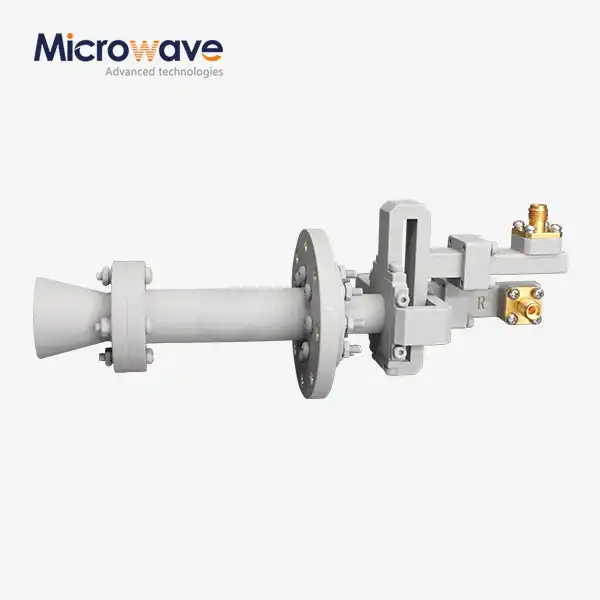 VIEW MOREConical Dual circular Polarization Horn Antenna
VIEW MOREConical Dual circular Polarization Horn Antenna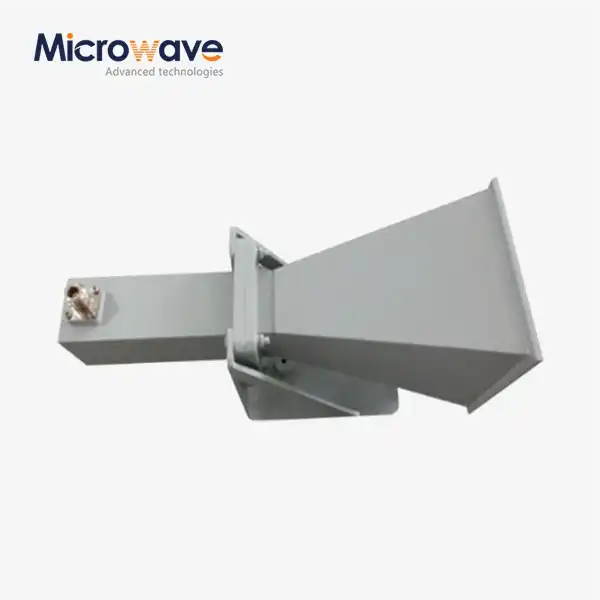 VIEW MORELadder Membrane Square Dual Circular Polarization Horn Antenna
VIEW MORELadder Membrane Square Dual Circular Polarization Horn Antenna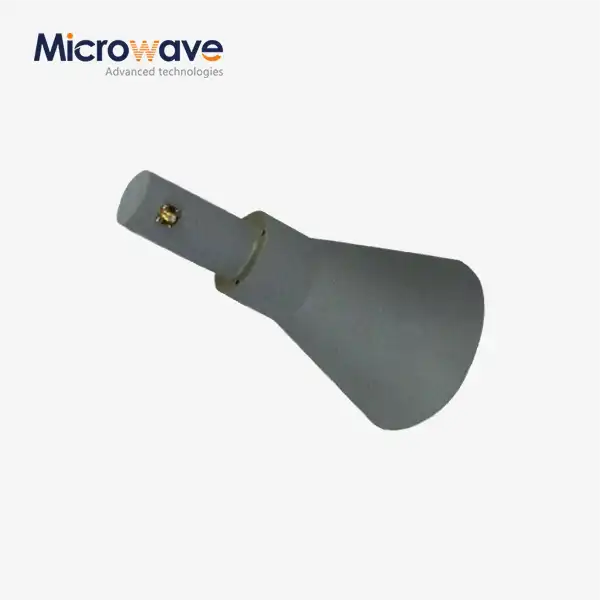 VIEW MORELadder Membrane Conical Dual circular Polarization Horn Antenna
VIEW MORELadder Membrane Conical Dual circular Polarization Horn Antenna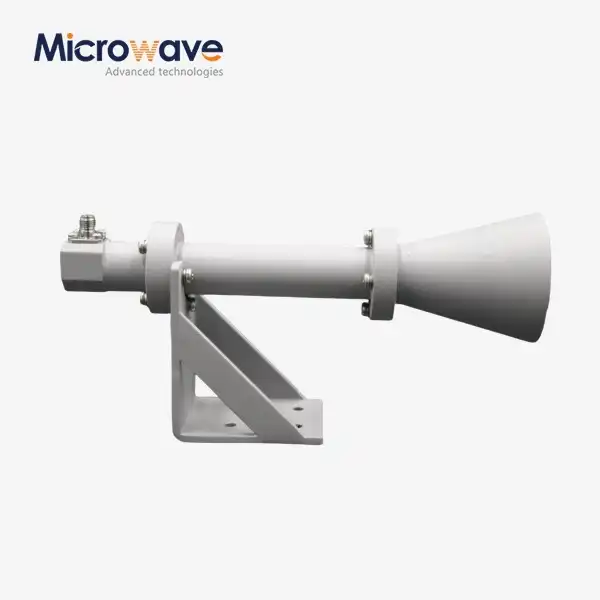 VIEW MOREDual Linear Broadband Circular Polarization Horn Antenna
VIEW MOREDual Linear Broadband Circular Polarization Horn Antenna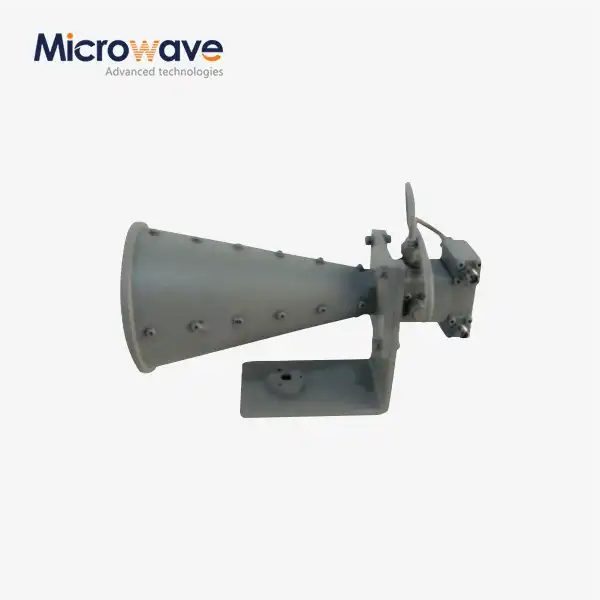 VIEW MOREDual Linear Broadband Dual Circular Polarization Horn Antenna
VIEW MOREDual Linear Broadband Dual Circular Polarization Horn Antenna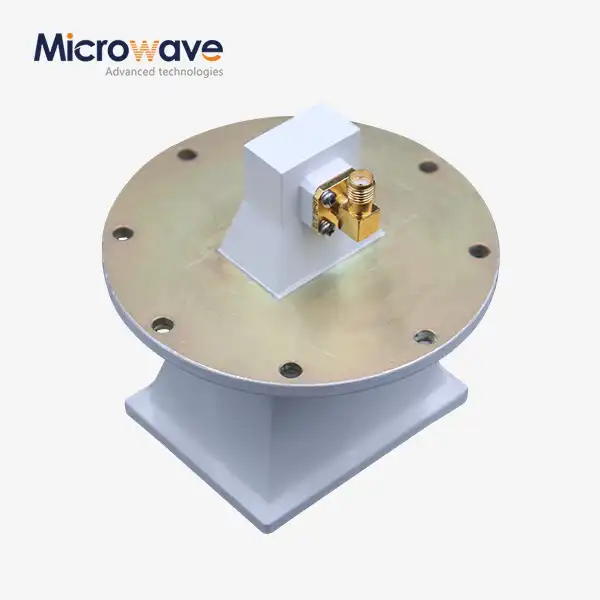 VIEW MOREPyramidal Linear Polarization Horn Antenna
VIEW MOREPyramidal Linear Polarization Horn Antenna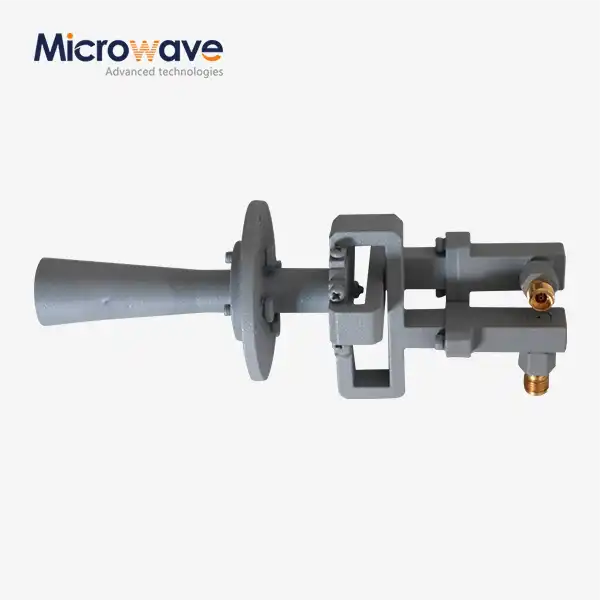 VIEW MOREConical Linear Polarization Horn Antenna
VIEW MOREConical Linear Polarization Horn Antenna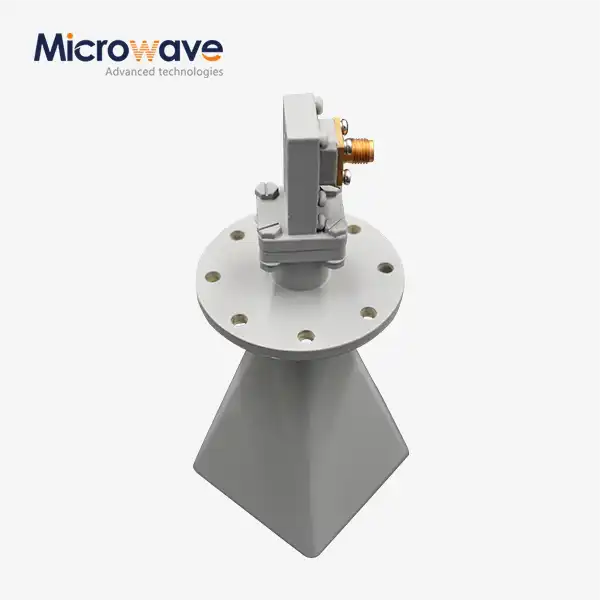 VIEW MORELow Side Lobe Diagonal Linear Polarization Horn Antenna
VIEW MORELow Side Lobe Diagonal Linear Polarization Horn Antenna




